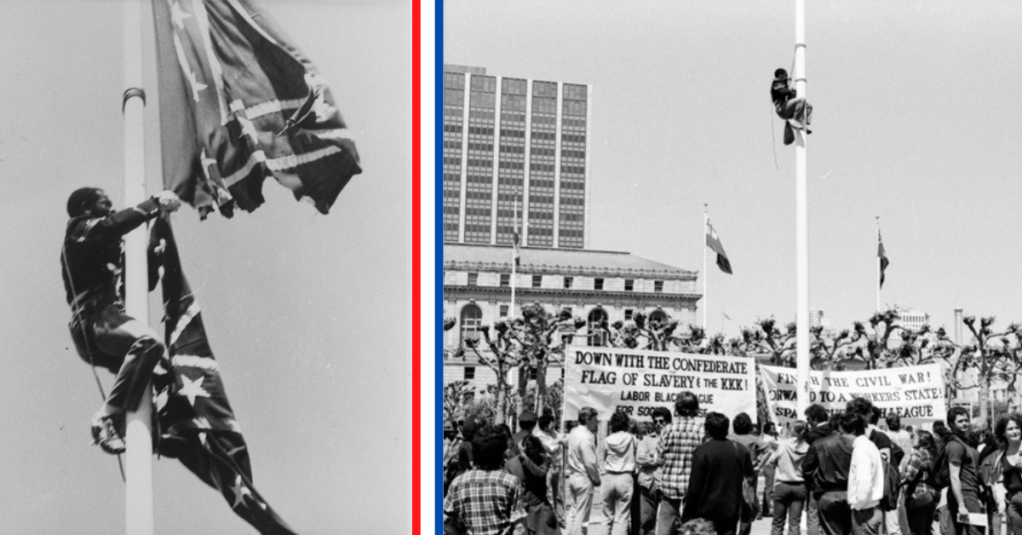It’s odd nowadays to imagine the liberal city of San Francisco officially flying a Confederate flag for any reason, but sure enough, there it was, officially flying over San Francisco’s Civic Center Plaza. The city’s Black population, including Richard Bradley, was not happy about it.
The flag was actually part of a historical effort. It was flying with 18 other flags from American history, detailing how the country had changed over its 200-plus years. It was also not actually the official flag of the short-lived Confederate States of America. As is often the case, that flag was confused with the “Stars and Bars,” the battle colors of Robert E. Lee’s Army of Northern Virginia.
Neither of these facts made supporters of the local Spartacist League, Spartacus Youth League and Labor Black League for Social Defense any easier with seeing it raised in a public square. In 1984, the groups descended on Civic Center Plaza to protest its inclusion in the historical project.
One of those protesters was Richard Bradley, originally from South Carolina, who grew up with a personal view of what that flag meant. He came dressed as a Union soldier and would make history by climbing the flagpole and tearing the Confederate banner down.
Some 37 years after the event, San Francisco’s ABC7 affiliate aired a story about a local school, Dianne Feinstein Elementary, voting to change its name. The reason it was dropping Senator Feinstein’s name was because she was Mayor of San Francisco at the time, and after the rebel flag was torn down, she ordered a new one put in its place in an attempt to curry favor with the pro-South Dixiecrats coming to the city.

With news of the school renaming, photos of Bradley tearing down the flag resurfaced on the internet. ABC reporter Lyanne Melendez reached out to find Richard Bradley via a broadcast in January 2021. Bradley, it turned out, was alive and well at age 70, and was once again living in his native South Carolina.
He told the reporters that even at age 70, he would climb any pole once again to take down a Confederate flag, saying it represents the ugliness of the world we live in. He also thought dropping Feinstein’s name from the elementary school was a good idea.
“They should have the name removed from the school. She does not represent what makes the people happy and what’s good in the world we live in or in San Francisco,” he said. His advice for the school board was, “Keep students in this country that we live in looking forward and looking at what represents them and what’s good for America.”
One school board member suggested renaming the school for Richard Bradley, but in the end, the School Board’s renaming plan was scrapped entirely, and all 44 proposed name changes were halted.
Feinstein finally gave in to the protestors in 1984 after replacing the flag the first time. The second time it was torn down, a member of the International Longshore and Warehouse Union Local 6 burned the flag. As it burned, the crowd cheered and broke into a rendition of “John Brown’s Body,” an abolitionist song sung by Union troops during the war.
The flag was not replaced again.

